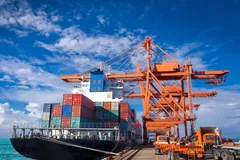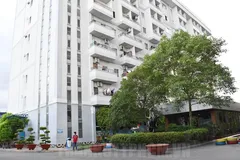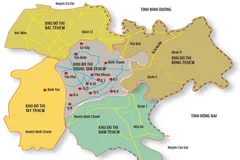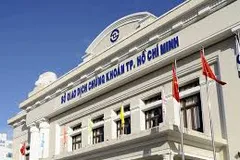The government issued the Resolution 02/NQ-CP dated 1 January 2019 as “keep implementing the objectives and solutions to improve the business environment and increase the nation’s competitive capability in 2019-2021”.
The resolution firstly tasks the Ministry of Justice with building a guidance to help ministries and local authorities to fully understand the “burden of government regulation” index (referred to as B1 Index). The government aims to cut down unreasonable administrative costs with the target of improving Vietnam’s B1 Index ranking by at least two grades in 2019.
Identify “burden of government regulation”
Identify “burden of government regulation”
There are two types of costs in operating a business. The first one is direct cost which is spent for producing products (like materials, labor, etc…). Second one is indirect cost which is related to legal compliance activities. The World Economic Report termed it as “burden of government regulation”.
| An unreasonable word in business regulation might cost enterprises many billion dong. Hence, laws and regulations should be amended in ways that benefit enterprises. |
In 2018, Vietnam was ranked 96th out of 140 countries in terms of “burden of government regulation”. This was a very low grade. That partly helps to explain why Vietnam enterprises’ profitability and competitive capability is very low in comparison to neighboring countries.
For example, if Vietnam and Thailand enterprises’ direct cost is equal and the legal and administrative cost of Vietnam is higher, Vietnam enterprises’ profitability will be lower than Thailand.
Understand that, the government applies many solutions to cut these legal compliance costs for enterprises. The “burden of government regulation” is defined including administrative procedure compliance cost, administrative fees and charges, investment cost, opportunity cost, and other hidden costs.
Cost burden
Cost burden
The administrative procedure compliance cost includes: (1) the time enterprises have to spend for completing the required administrative process (like documentation preparation, documentation application and result announcement), and (2) the money enterprises pay to persons doing these tasks. Assume enterprises have to do these tasks Y times a year, then the administrative procedure compliance cost = (1) x (2) x (Y).
The administrative fees and charges are money enterprises pay to government offices for the application (*). If the frequency enterprises do these tasks is Y, then total fees and charges = (*) x (Y).
The administrative fees and charges are money enterprises pay to government offices for the application (*). If the frequency enterprises do these tasks is Y, then total fees and charges = (*) x (Y).
The investment costs are direct costs that enterprises have to pay for purchasing fixed assets, machines and tools or money paid for training labor. The purpose of these investments is to meet the legal requirements.
Opportunity cost is the cost arising when business opportunity is missed, caused by a long-time-consumption process. The opportunity cost also includes cash cost (like interest cost, income missed) that enterprises have to pay while waiting government approval. This cost is not easy to calculate and usually not a small amount.
The other cost that scares enterprises is hidden cost. That is the lubricant cost enterprises pay to government officers to smoothen and speed up the process.
An example of “burden of government regulation” is in transportation industry.
The government requires the contracted-transportation-service cars to have a logo stuck on the right hand side of the front windscreen (mentioned in Decree 86 on transport business, Article 7). This requirement creates many legal administrative costs, such as time cost for application; fees and charges to get the logo.
An example of “burden of government regulation” is in transportation industry.
The government requires the contracted-transportation-service cars to have a logo stuck on the right hand side of the front windscreen (mentioned in Decree 86 on transport business, Article 7). This requirement creates many legal administrative costs, such as time cost for application; fees and charges to get the logo.
The legal framework also requires cars to have the words “contracted cars” stamped on two sides and in front of cars. Meeting these requirements will burn more enterprise money.
The 9-seater cars, which operate under the electronic contracts, are required to assemble an electronic board on its roof saying “electronic contracted car”. The cost for this installment ranges between VND 300k-800k per car. If the transportation company has a thousand cars, the cost incurred will be heavy.
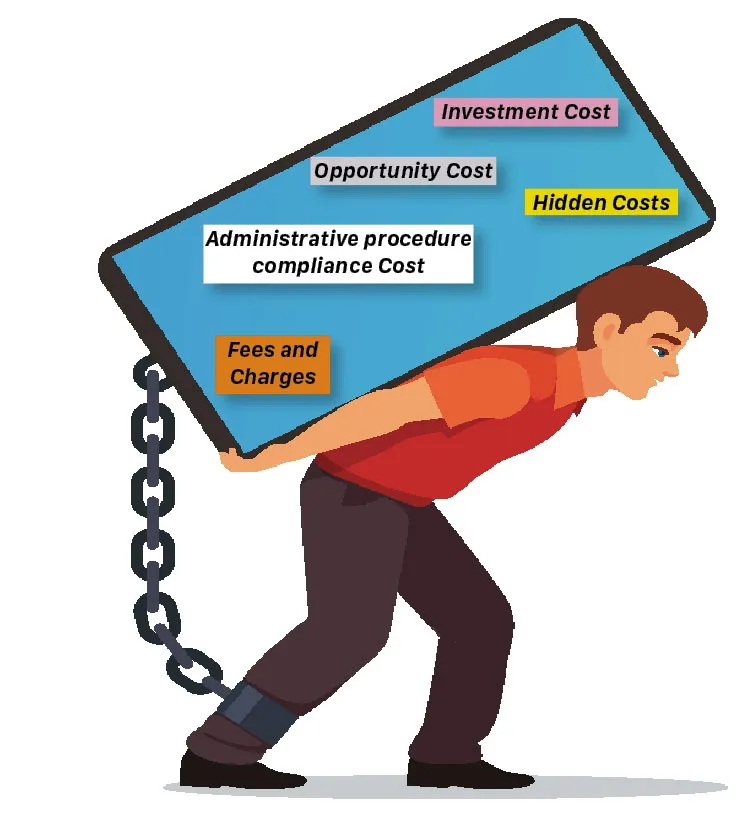
Ways to cut costs
Firstly, to reduce the cost of the administrative procedure compliance, the government should focus on improving the quality of regulations as well as strictly enforcing these regulations. The government should take out some unnecessary and repetitive steps. It is a need to simplify the documentation procedure and shorten the processing time in tandem with lengthening the license maturity period. The government should replace the current application process by the procedure of business declaration and announcement. It should remove the requirements of certification for legible businesses and replace it by a list of legible businesses not requiring certification.
Secondly, for reducing the administrative fees and charges, the government should review all current fees and charges and should abolish unreasonable costs.
Thirdly, regarding investment cost, the government should seriously consider the cost arising when issuing a regulation related to this field. The government should cut, reduce, and remove some unnecessary requirements, such as minimum capital, minimum operating size, technology level of machines and tools, experiences of management and labor.
Thirdly, regarding investment cost, the government should seriously consider the cost arising when issuing a regulation related to this field. The government should cut, reduce, and remove some unnecessary requirements, such as minimum capital, minimum operating size, technology level of machines and tools, experiences of management and labor.
Fourthly, to eliminate the opportunity cost, the government should improve the quality of regulations, simplify them, and delete duplicated and conflicting administrative processes.
Fifthly, hidden costs should be eliminated.
To reduce the required frequency of doing administrative tasks, the government should build a cooperation framework between authorities. It should apply technology in documentation. Online procedure should also be considered.
Furthermore, the result notification should be on time. The government officers should not wait for last minute to ask for more documentations or to finally inform with “not qualified” statements.











